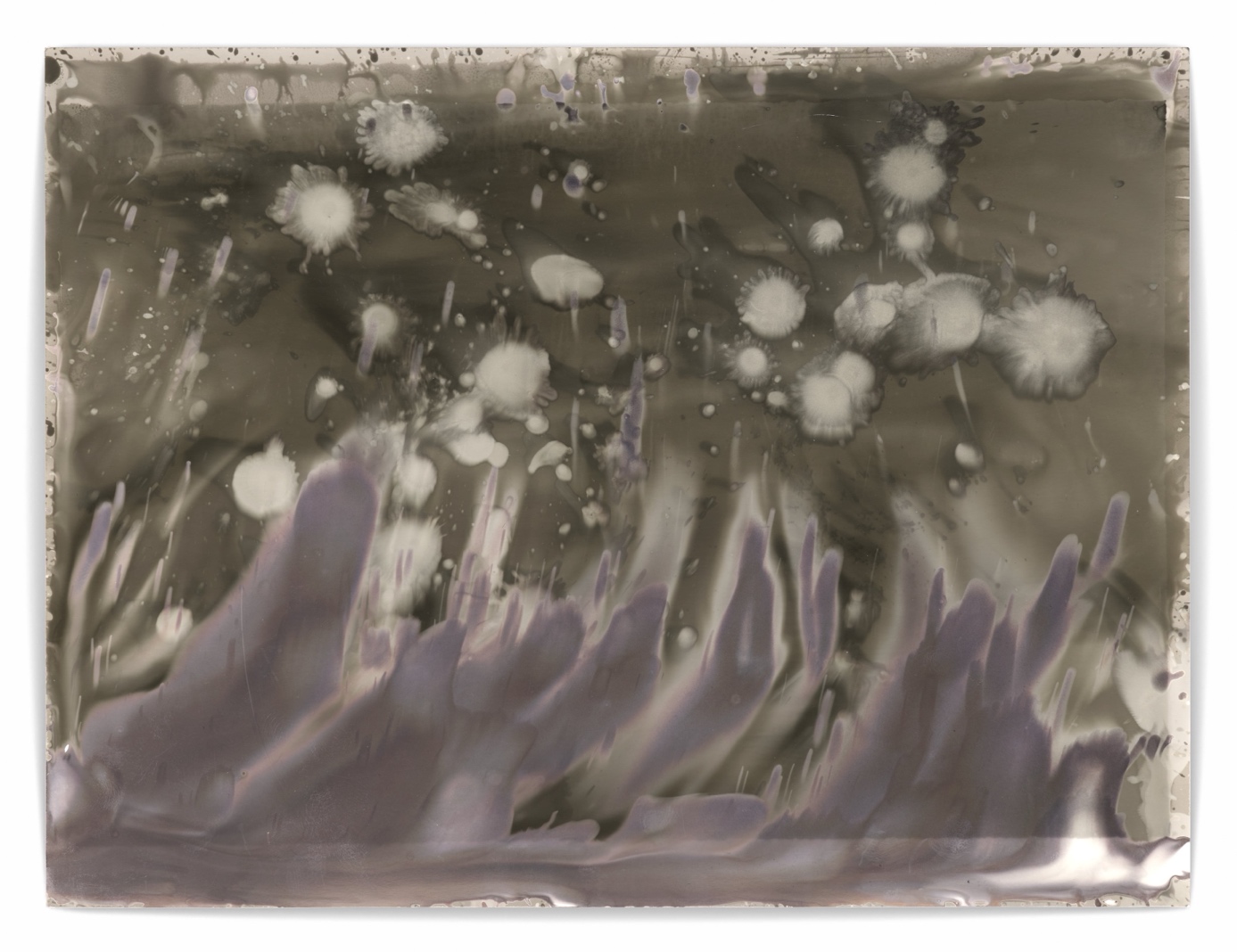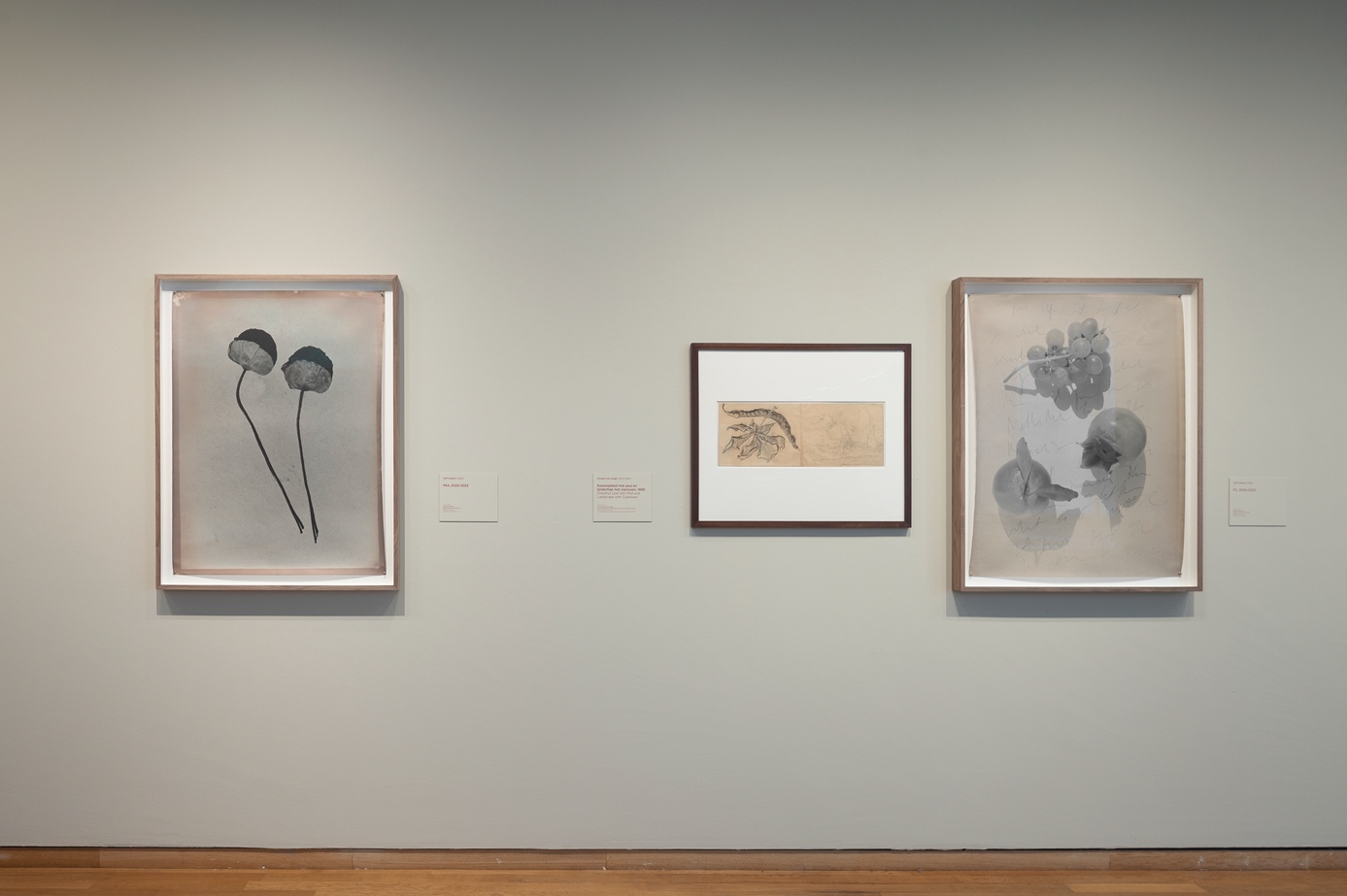Jeff Cowen: “Silver is a Mysterious and Luminous Element”


Malin Ebbing had a chat with artist Jeff Cowen and Stockhom-based gallerist Ellen K Willas of Willas Contemporary about their upcoming presentation at Paris Photo. Together they discussed the alchemistic qualities of silver gelatin prints, why photography is Cowen’s go-to medium, and the alluring Provence Works that will be shown at the fair.
“A work, in my opinion, must have a sense of mystery to it-and express what is uncharted, unapproachable and irrational,” Cowen tells me over a video call from his home and studio in Provence, a week before the opening of his solo show with WILLAS Contemporary at Paris Photo. With a neighbouring vineyard as a scenic backdrop, Cowen’s studio spans two stories, including a massive darkroom with extra-large trays for working on his characteristic large-scale prints.
Cowen continues: “In essence, I’m a kind of treasure hunter or an explorer—and photography is simply the means to that end.”

The renowned American artist began experimenting with photography at NYU in the late 80s, where he also worked as a taxi driver and assisted the iconic filmmaker Larry Clark to make ends meet.
“Any medium, at first, is simply a path—a means to experiment, explore, and express. The camera offers tremendous power and possibilities. When I was in my twenties, I couldn’t face the world directly. The camera became both a shield and a tool, something that allowed me to keep the world at bay while also approaching it. I never took it off my neck. I even slept with it beside me. At some point, I began to see the world entirely in black and white—a new realm. From the moment I first put a camera around my neck, I felt both safety and power. A camera gives permission to approach anyone, to go anywhere, physically or metaphysically. Soon, I realised that photography, the magic that it is, is a way to explore the sacred within the profane,” he explains.
What are you going to exhibit at Paris Photo, and what is your relationship to the fair?
Cowen: I will exhibit about fourteen large and small-scale unique pieces from my Provence Works project from the last several years. I’ve been attending Paris Photo for as long as I can remember—it’s simply the most compelling and significant photography fair in the world. Michael Werner presented a solo show of my Berlin work in 2013. The Huis Marseille Museum for Photography also exhibited some of my early work from Paris, and more recently, I showed pieces with the late, one-of-a-kind Suzanne Tarasieve.
Do you work exclusively with silver gelatin? What is it about this technique that you like so much?
Cowen: It is my primary medium. Silver is a mysterious and luminous element—imbued with light, divine in its potential. From a chemical perspective, it offers infinite possibilities for transformation and depth. It’s a material that quite literally holds light, and therefore, spirit. The Pre-Columbians used silver. Even Leonardo Da Vinci worked with silver in his drawings – it has a long and fascinating history in art.

A key concept of your practice involves the “non-moment.” Can you explain what it is and why it’s important?
When I was coming up as a photographer, Cartier-Bresson’s idea of the “decisive moment” was all the rage—capturing that perfect, fleeting instant in time and no cropping, God forbid. But I was not much for rules or restrictions, and I soon realised that what interested me wasn’t to document a physical event in time, but to make visible the invisible, to give voice to the sacred, eternal and irrational. Thus, by photographing the “non moment “, what lies just before or after an event—what I call the “non-moment,” the event and subject of the image becomes the formerly invisible. For me, photography is thereby a tool that offers the promise of transcendence.
This extends to post-production as well. I’ve learned to get out of my own way—to trust the process and the unspeakable, which are far more interesting than whatever is happening in my head. Often, when I look at my work later, I have no recollection of making it—and in a sense, I never did. I’m interested in the intervention of being within the process. Just because you can’t see something doesn’t mean it isn’t there.

Your work involves a lot of experimentation in the darkroom. Can you tell us about your creative process? Is it purely intuitive, or do you have a clear vision before you start?
Cowen: Working in the ruby red lit darkroom is both an intervention and a form of sleepwalking. I often enter a kind of trance, and when the lights finally come on, there’s a print in the wash that seems to have made itself. It’s never a clear vision—it’s a dialogue with the unknown.
Ellen K Willas, founder of WILLAS Contemporary, it’s your first time as an exhibitor at Paris Photo. How does it feel?
Willas: Exhibiting at Paris Photo in the beautiful Grand Palais for the first time brings a vibrant mix of pride and excitement, as it opens opportunities to connect with the international photography community and share Cowen’s works from Provence for the first time in France, and on a global stage.

Fittingly, Willas’ first encounter with Cowen’s works was during Paris Photo in the early 2000s, where they got introduced by the founders of Lens Culture, Jim and Millie Casper, and the artist-gallerist duo has been working together since 2011. “This series stands out from the artist’s previous series as it captures the sense of wonder evoked by Provence,” Willas explains. However, Cowen’s signature large analogue prints on thick photographic paper, and the way he experiments with the chemicals during the photographic development process, remain the same. Similar to his Berlin series, for instance. Cowen’s work always evolves around still life, landscape, and portraits, but now the brilliant light and the beauty of Provence’s nature shine through.
Paris Photo 2025 will take place November 13-16, 2025, at Grand Palais in Paris.
You Might Also Like
What's Your Reaction?
Writer, Cultbytes Malin Ebbing is a fine art professional and journalist based in Stockholm and Italy. She has a masters' degree in fine and decorative art from Sotheby’s Institute of Art in London. During the two decades that she has been active in the art world, she has worked with auction houses, contemporary art galleries, and art fairs. Her writing focuses on visits to studios and houses of artists and art collectors in Europe and interviews with artists. l igram l

